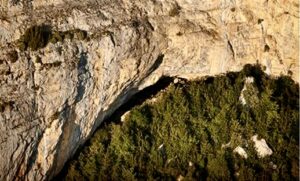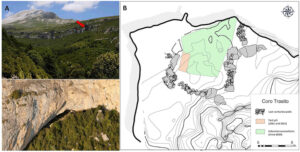
UNIVERSITAT AUTONOMA DE BARCELONA—The research on management strategies and use of animal resources in high mountain areas during the Early Neolithic, approximately 6,500 to 7,500 years ago, was conditioned by the presumption that human occupancy of these regions were mainly seasonal and that economic practices focused greatly on making use of wild resources. With regards to livestock rearing, the role of sheep and goat transhumance in high mountain areas has stood out traditionally, while only a marginal role has been given to other livestock activities, in which the temporary maintenance of these animal flocks has been highlighted.
Researchers from the Archaeozoology Laboratory and the High Mountain Archaeology Group of the Universitat Autònoma de Barcelona (UAB), the University of Évora (HERCULES Laboratory), the Milà i Fontanals Institution-CSIC and the General Directorate of Cultural Heritage of the Government of Aragon, have now for the first time managed to characterize the livestock practices and feeding strategies of domesticated animals in high mountain regions during the Early Neolithic, specifically in the archaeological site of Coro Trasito, located in the region of Sobrarbe, Aragon. Their research has yielded new elements to be used in the study of the complexity of neolithisation processes in the Central Pyrenees.
The study* conducted by the research team focused on assessing animal ecology, livestock management strategies and feeding practices implemented by the first societies settling in high mountain regions (over 1,500 metres above sea level). To do so, the team became the first to apply to high mountain contexts a combination of analysis of stable carbon and nitrogen isotopes in bone collagen – the study of these two isotopes can be used to determine the diet and the position in the food chain of the animals – and the archaeozoological analysis of the remains of animals from that period. Thanks to this combination, researchers were able to document that management and feeding strategies differed among flocks.
The results obtained showed that flocks belonging to these first settlers were small and formed by a few number of each species: cows, goats, sheep and pigs (Bos taurus, Capra hircus, Ovis aries and Sus domesticus), and were mainly used for their meat and milk production. In addition, researchers were able to document the rise in the economic importance of pigs (Sus domesticus) during the Neolithic.
The presence in some of the cases studied of different ways of managing the feeding of animals, with access to different pastures and the possible provision of forage, mainly from surplus agricultural products, shows that livestock practices developed at the Coro Trasito site were consolidated practices at the start of the Neolithic and related to agricultural practices. The study also demonstrates how flocks were adapted to the environmental conditions of the cave.
The results of the archaeozoological, isotopic and archaeological analyses reveal that the inhabitants of the Coro Trasito cave made use mainly of domestic resources. In addition, the presence of transformation activities related to dairy products and fat, as well as the existence of storage structures within the cave, point to the complexity of neolithisation processes in the Central Pyrenees and how these areas were rapidly integrated into an even wider and more complex economic system.
_____________________________

Above: Image of the southern slope of Sierra de Tucas (Huesca, Spain). The arrow indicates Coro Trasito cave. Below: Entrance to Coro Trasito cave. (B) Plan view of Coro Trasito cave, showing the location of the 2011 and 2013 test-pit and the area of the extended excavation. The isocotes indicate every 20 cm. © 2023 Navarrete, Viñerta, Clemente-Conte, Gassiot, Rey Lanaspa and Saña, CC-BY-4.0, Creative Commons
_____________________________
Article Source: UNIVERSITAT AUTONOMA DE BARCELONA news release
*Navarrete V, Viñerta A, Clemente-Conte I, Gassiot E, Rey Lanaspa J and Saña M (2023) Early husbandry practices in highland areas during the Neolithic: the case of Coro Trasito cave (Huesca, Spain). Front. Environ. Archaeol. 2:1309907. doi: 10.3389/fearc.2023.1309907
Cover Image, Top Left: © 2023 Navarrete, Viñerta, Clemente-Conte, Gassiot, Rey Lanaspa and Saña, CC-BY-4.0, Creative Commons
_____________________________
Advertisement

See the incredible archaeology, architecture, and art of northern Spain. A unique tour with special expert guides and lecturers through the collaboration of Popular Archaeology Magazine and Stone & Compass Tours. Not to be missed. Read More About It: https://popular-archaeology.com/article/northern-spains-triple-a-archaeology-architecture-and-art/.
_____________________________





